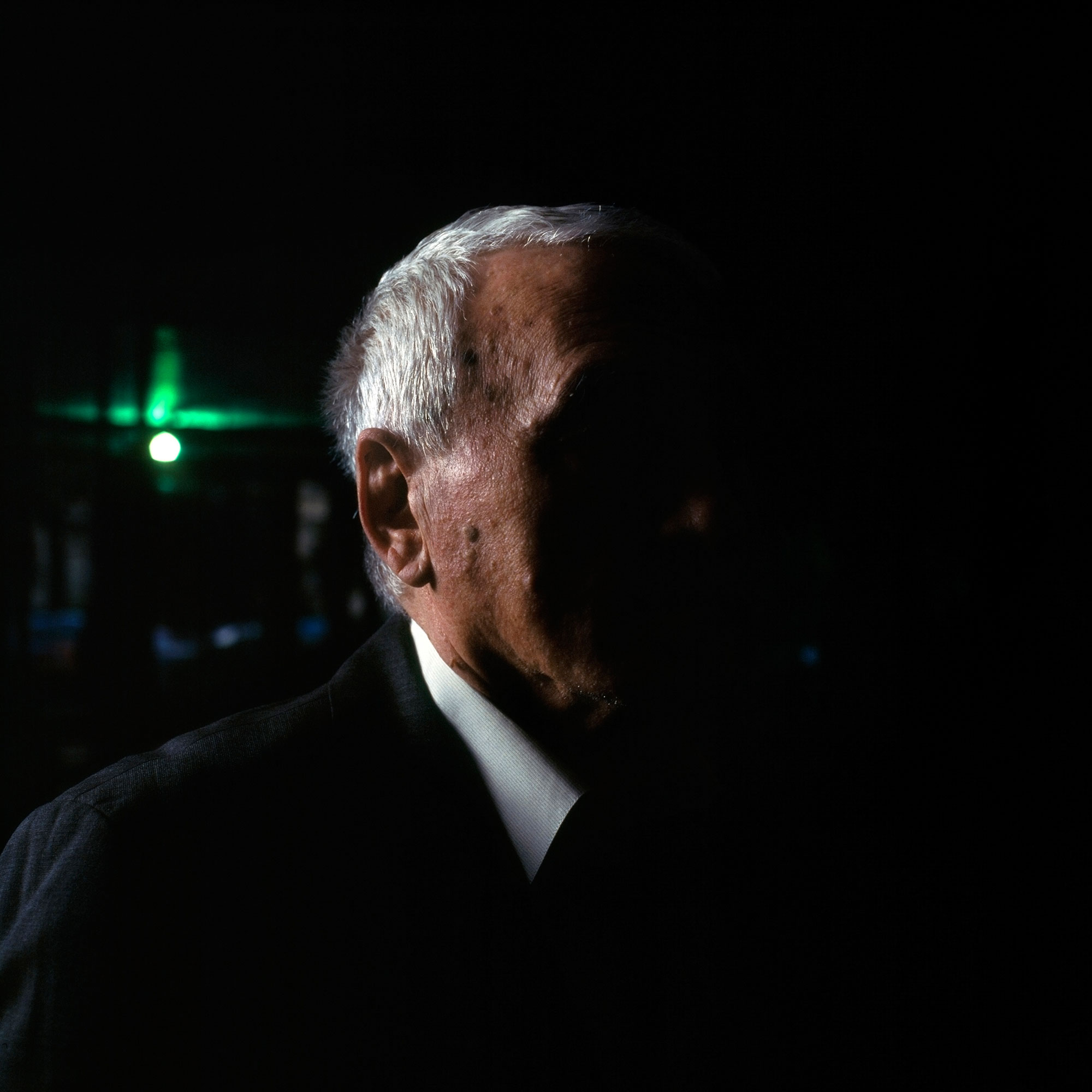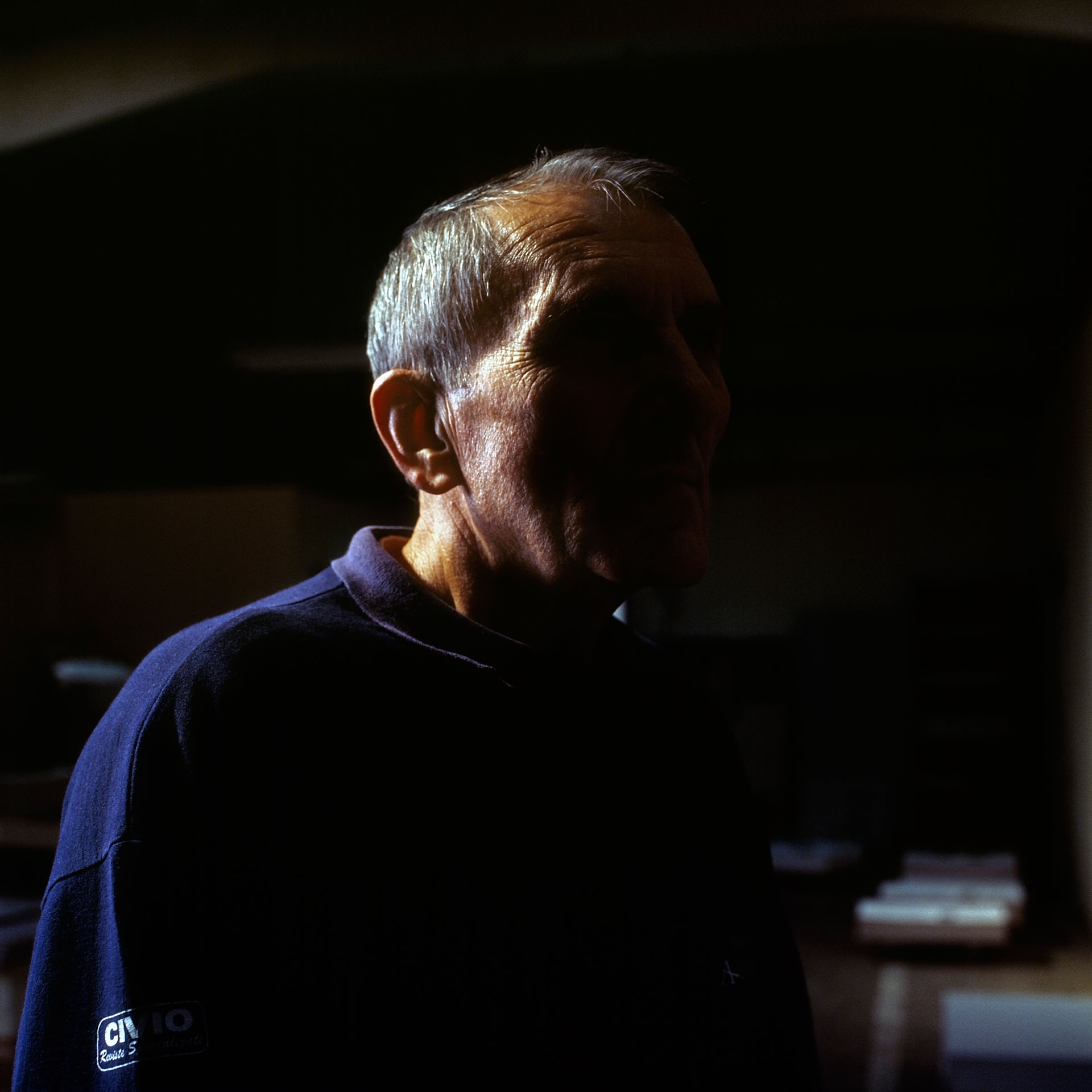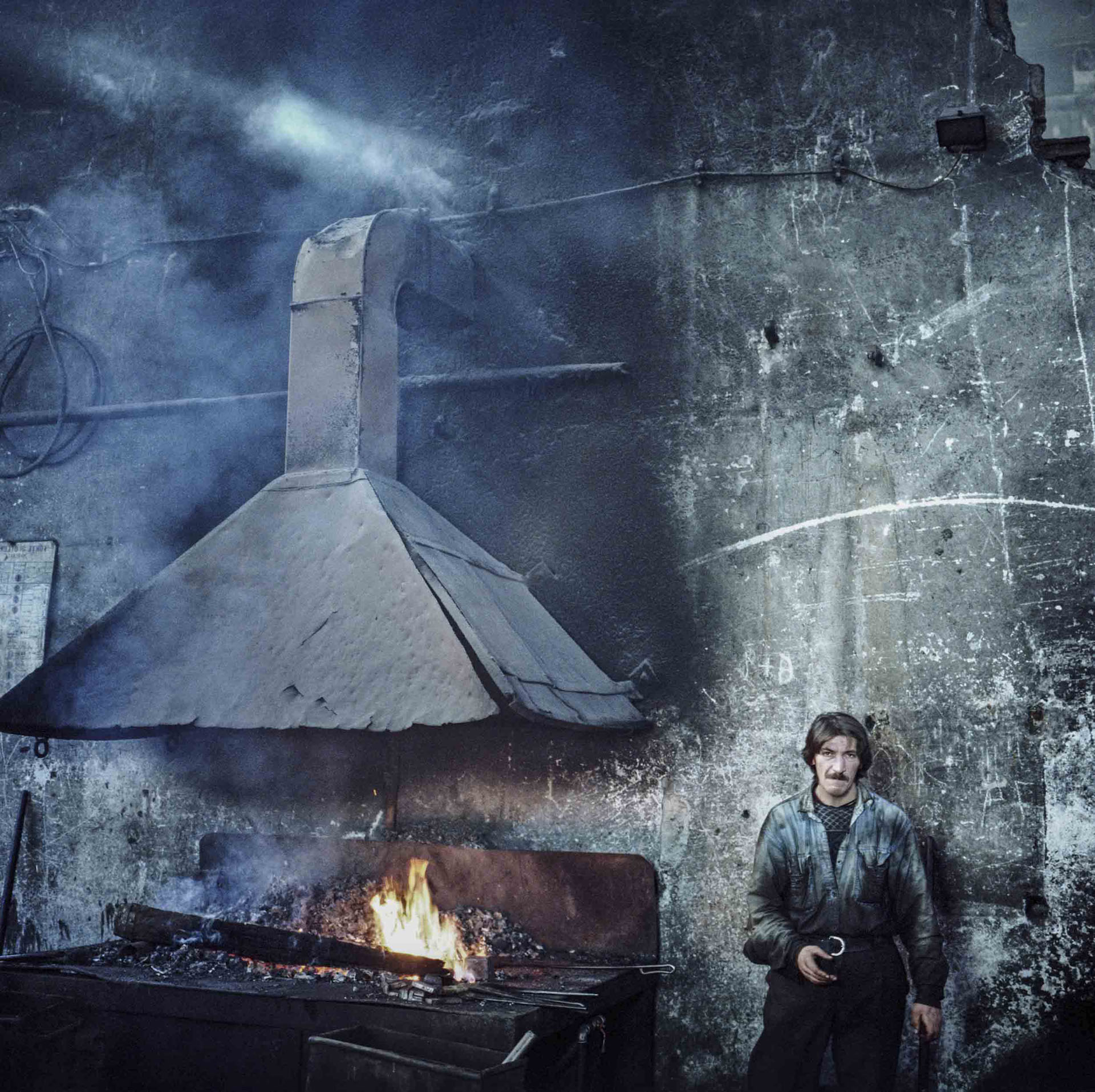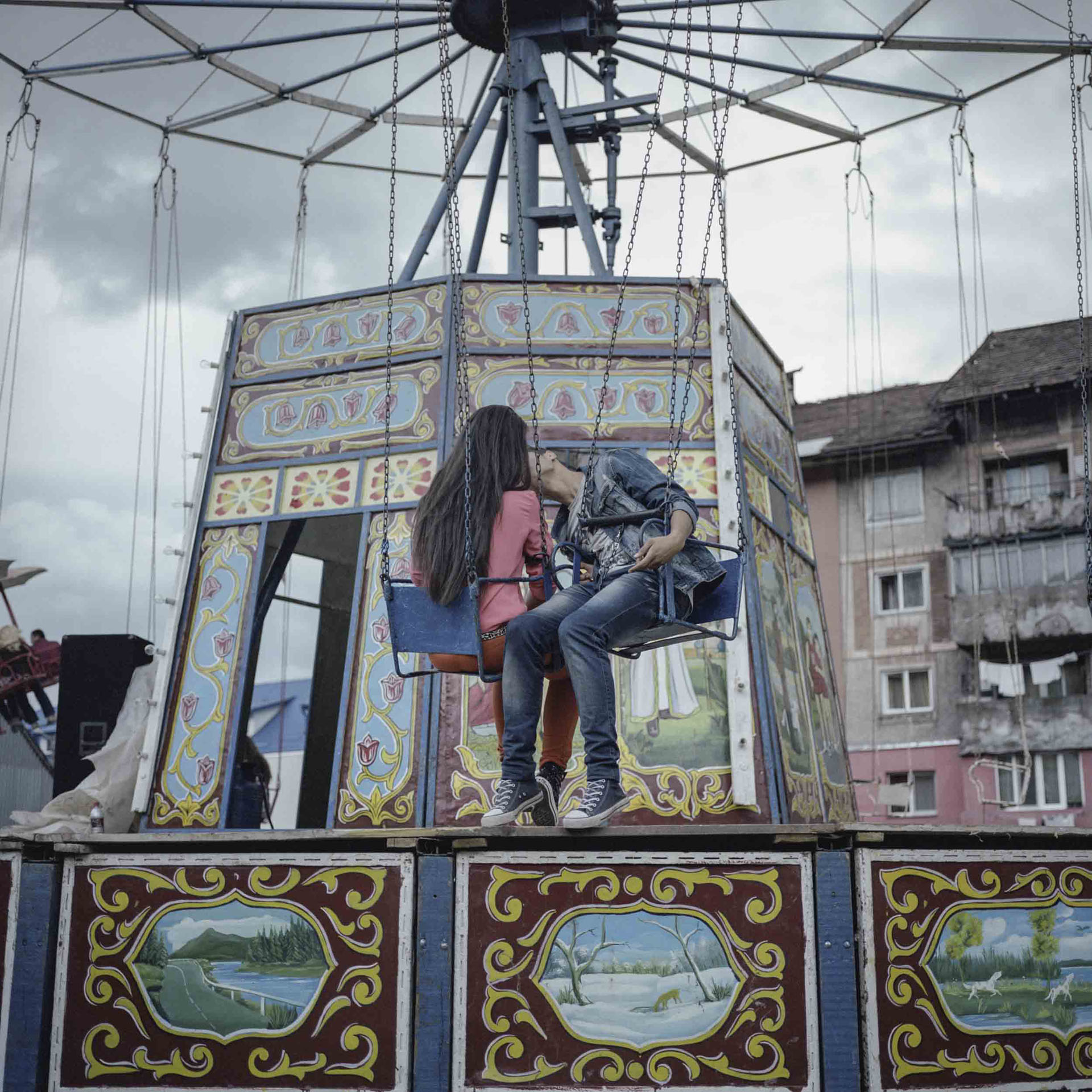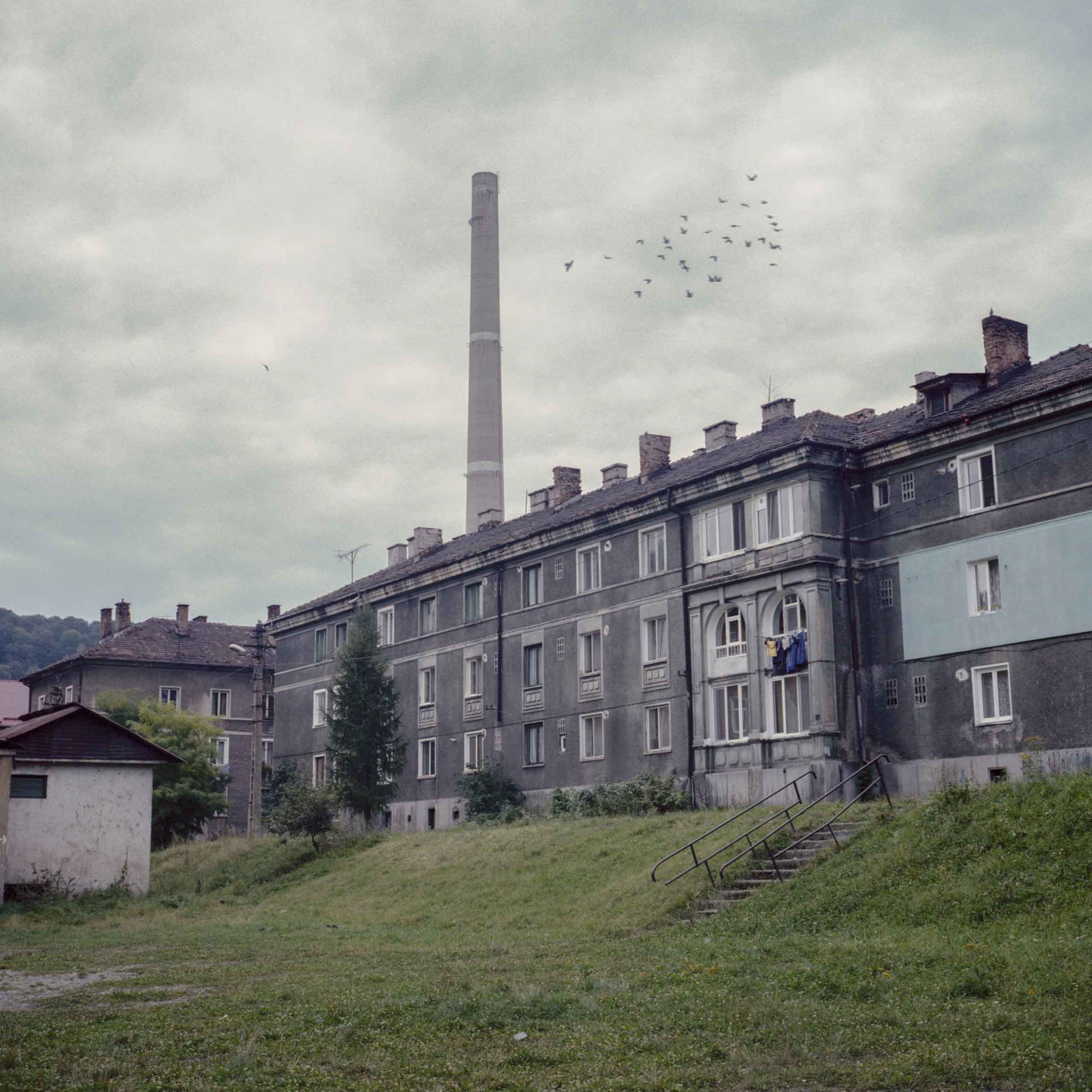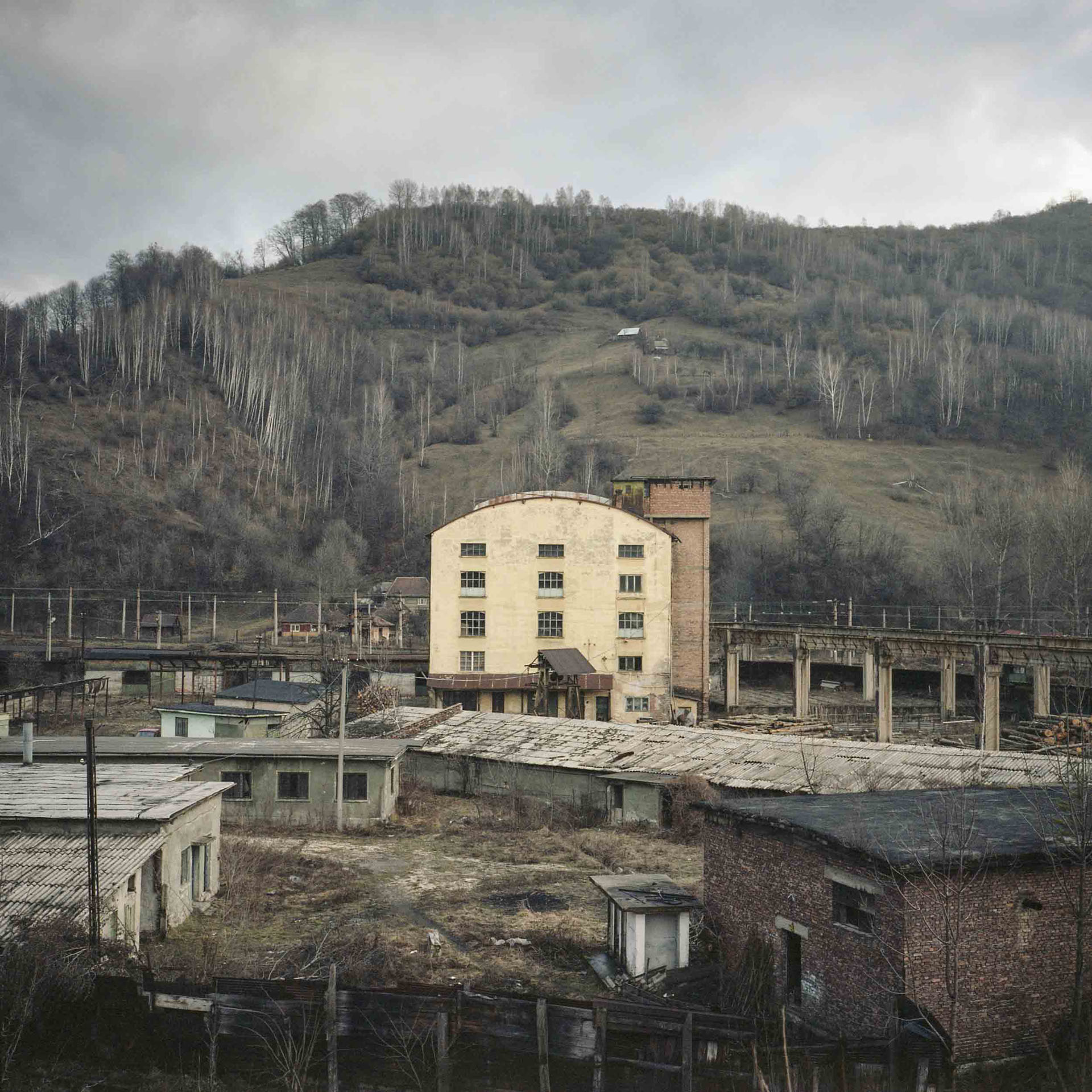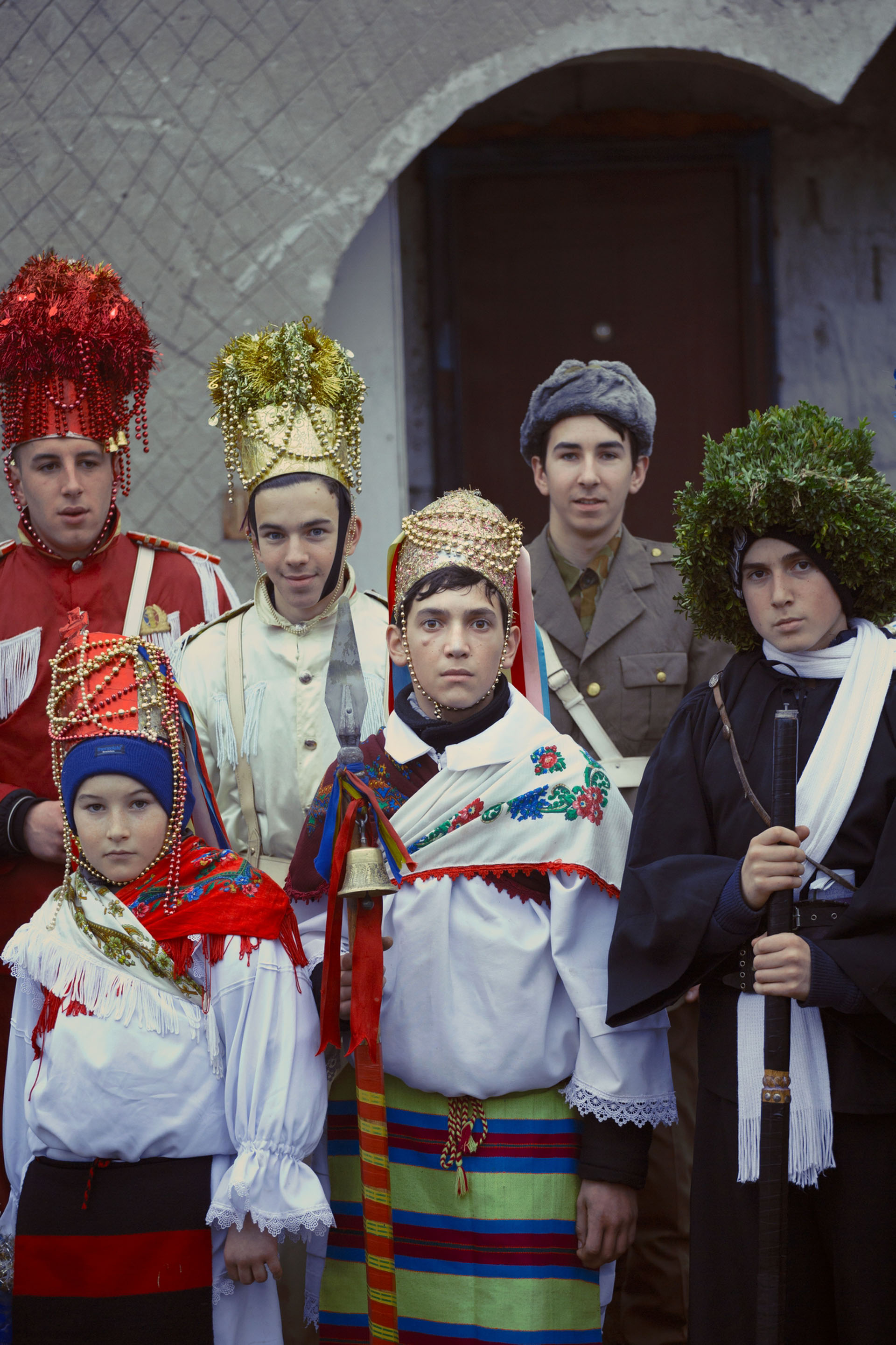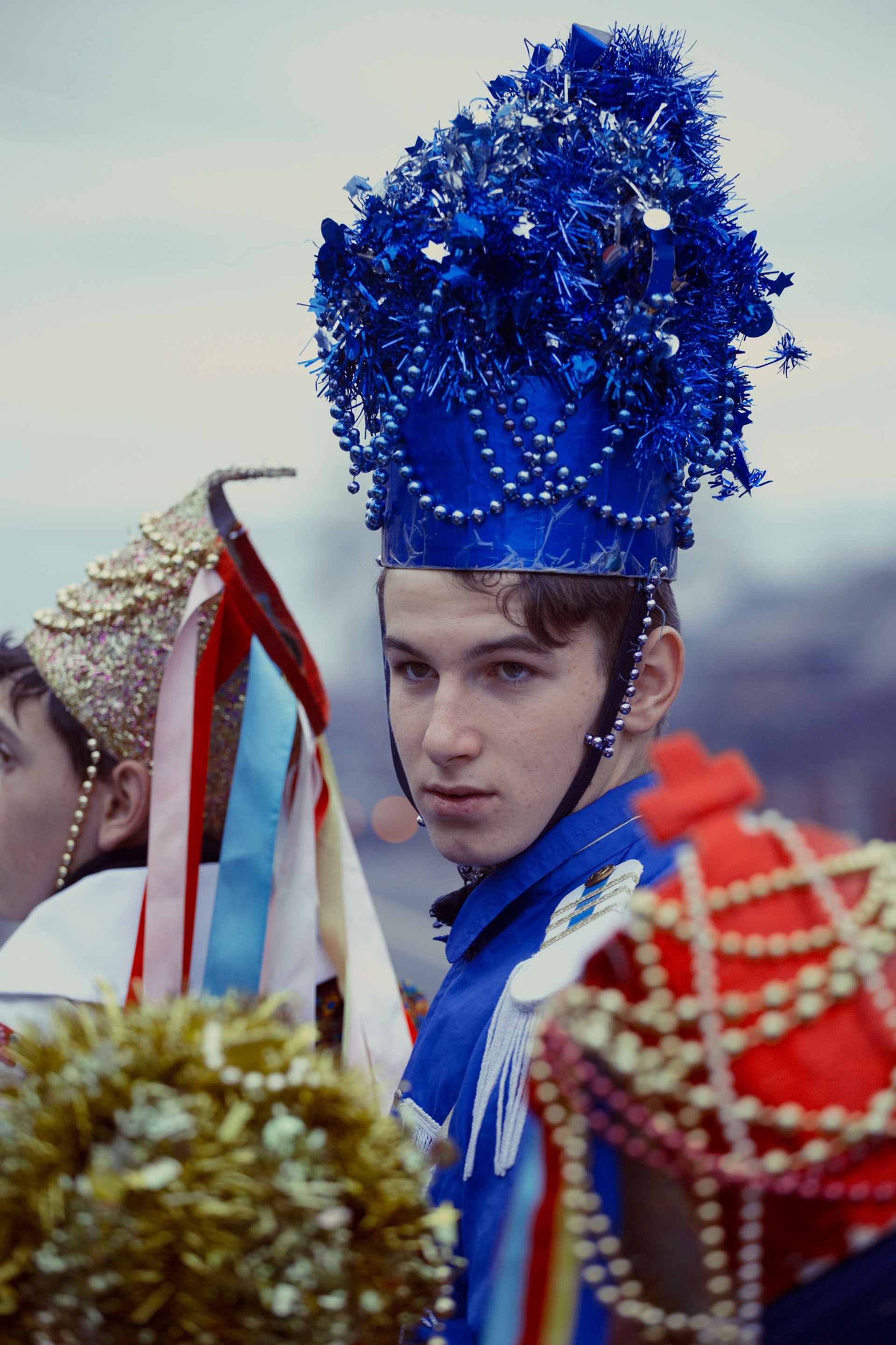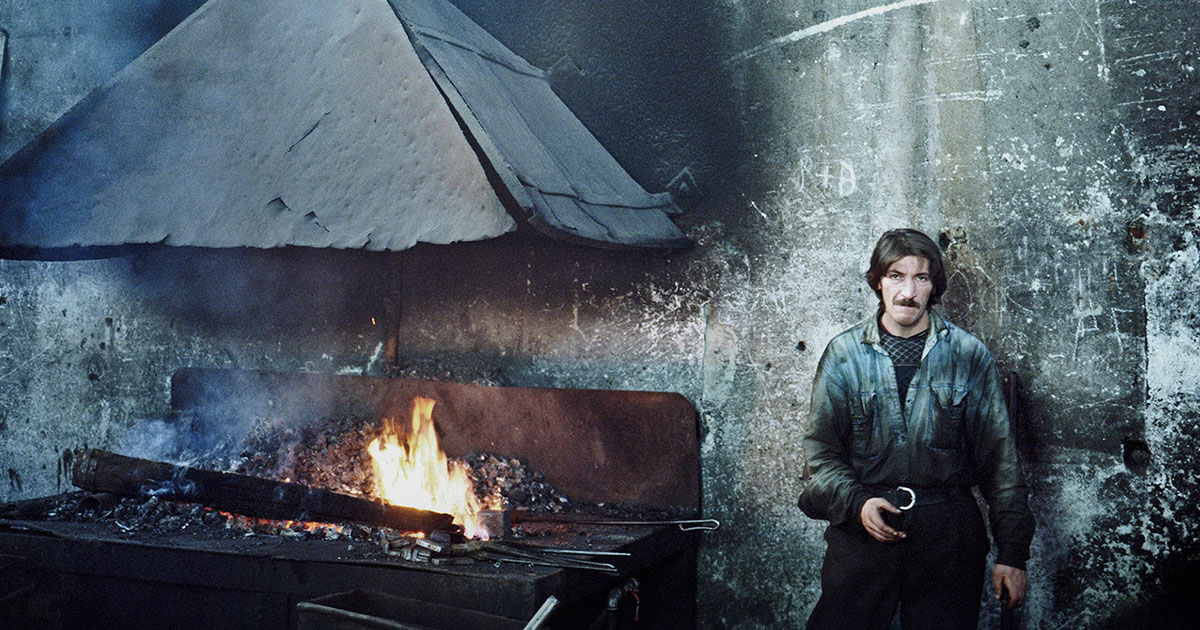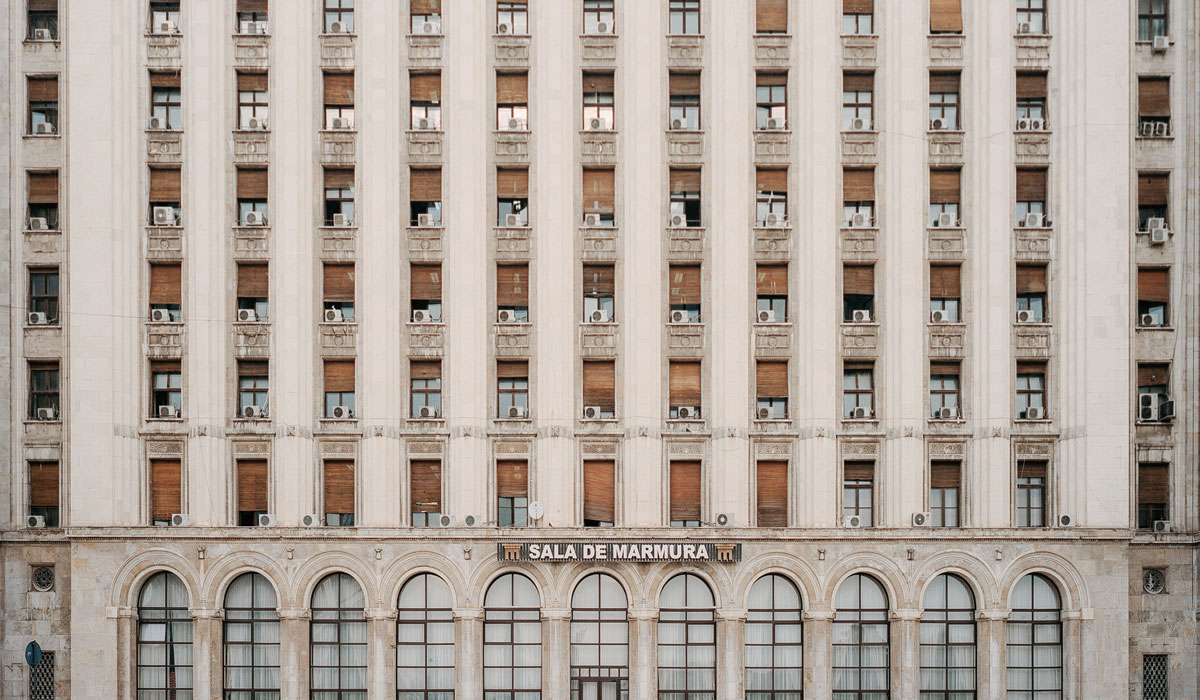A new crop of Romanian photographers is taking over Europe’s festival for young talent
Paris’ Circulation(s) festival is dedicated to promoting young European photographers. This year’s edition is the first to focus on work from a single country since the festival launched in 2011. Four Romanian artists were invited to show their work — Mihai and Horatiu Șovăială, Ioana Cîrlig, and Felicia Simion.
Curators Francois Cheval and Audrey Hoareau were invited to consider Romania by the Institut Français as part of its France-Romania season but, impressed by “a kind of energy and effervescence in Eastern Europe now,” they readily agreed, and travelled to Bucharest to meet with local schools, galleries, photographers, and associations.
The three projects they have picked out play with very different aesthetics and approaches, but they also have something in common. In Cirlig’s Post-Industrial Stories, Simion’s ethnographies, and the Șovăialăs’ Reacknowledged Structures: Models, there’s a keen desire to unpick Romania’s past.
From Production Areas by Mihai Șovăială
Mihai and Horatiu Șovăială
Mihai (born in 1993) and Horatiu Șovăială (born in 1987) are brothers from Brașov in the central Transylvania region. Describing themselves as growing up in “a pretty standard family, in a block of flats,” they both went on to study image-making in the photography department at the National University of Arts in Bucharest, which was founded in 1995.
Both work separately as well as together, and both take a conceptual as well as a documentary approach that often engages with Romania’s recent past. Horatiu’s project Calea București is an offbeat look at “a road that always leads to Bucharest” — a street that exists in many towns in Romania. Missing out historic buildings, the project includes instead a state television tower, “a mandatory landmark of the promised freedom and hopes that we now suspect were naive,” as curator Călin Stegerean writes.
Mihai’s project Production Areas, meanwhile, looks at the abandoned sites on which industrial centres once stood in Romania, what he describes as “the industrial phantom”. “The phenomenon of dismantling the former production centres is the starting point of a project that dedicates a visual analysis of those temporarily forgotten spaces in the post-communist period,” he states. “The situation indicates a social context that is politically driven.”
At Circulation(s) the brothers are showing a joint project called Reacknowledged Structures: Models, which uses a collection of slides made by Romanian cinema studios in the 1960s and 70s. Used in elementary schools, the slides dropped out of use after the 1989 revolution and can now be found in flea markets or online auction sites; Mihai has been collecting them for years; in the winter of 2015, the brothers started to work with them together.
“We think it’s important to show these images and present them in a context in which the viewer understands their purpose,” they explain. “These slides were made in a very distinct communist propaganda language, which was the norm at the time for all state communication. This language is further elevated by the way in which the directors and photographers hired to make them used their cinematic technique to stage them.”
From Reacknowledged Structures: Models by Mihai and Horatiu Șovăială
“Kids aged between eight and 14 were automatically enrolled in the Pioneer Organisation, which was directly subordinate to the Union of Young Socialists and to the Communist Party,” they add. “It was a means to raise children directly into communist doctrine… We started thinking about the identity of the kids involved in the production of these images, and the fact that most of them are probably still alive.”
For the brothers, re-engaging with this history is essential, as “the people have still not come to terms with the country’s past” some 30 years after the 1989 revolution. There are, they say, “still a lot of unanswered questions.” As such, they’re not surprised to find other Romanian image-makers feeling a similar impulse. “It is important to understand that the recent history of the country and the relics of its past can bear a heavy interest for all artists coming from Romania,” they say.
Ioana Cîrlig
Born in Bucharest in 1987, Cîrlig got into photography in high school when she started playing with her uncle’s Soviet Zenit camera. Going on to study cinematography, she was drawn to photojournalism and started working as a staff photographer for magazines based in Bucharest. In 2010, she moved into shooting slower, more personal documentary projects, and she co-founded the Romanian Centre for Documentary Photography in 2016 with Petruț and Ioana Călinescu and Marin Raica.
The documentary photography scene in Romania is still small, she says, but “strong and very creative and enthusiastic”. “I am very excited about the energy in Romania’s new art and documentary scene,” she adds. “There are also great independent journalism projects and the film industry is amazing. I draw a lot of motivation from all this.”
She started Post-Industrial Stories in 2012 with Raica, moving to a small mining town to “document the atmosphere from within”. Romania was heavily industrialised during its 40-plus years of communism, she explains, with every town given an industrial centre and some quickly becoming economically dependent on them. But during the transition to a market economy these areas were cut adrift without a long-term plan for reconversion, leaving their workers and the communities that had sprung up around them at sea.
It’s a story with which Cîrlig has a very personal connection, having seen it first-hand in her own family. “My father worked in a factory in Bucharest and going there with him was one of my favourite things to do as a kid,” she explained. “After it closed he was quite lost, until he reached the age where he could get his pension. He was depressed for a long time and couldn’t make sense of what was happening. So I was curious how this story played out in other centres, in other families.”
Felicia Simion
Like Mihai and Horatiu Șovăială, Felicia Simion studied in the photography department at the Bucharest National University of Arts, graduating in 2016. But she went on to study an MA in Ethnology, Cultural Anthropology and Folklore at the University of Bucharest, and its effect can clearly be seen in her project ethnographies.
Engaging with Romania’s past, it doesn’t consider the communist years, or effects of de-industrialisation; instead it delves much deeper into the country’s history to look at religious traditions still celebrated today. She shows ancient customs such as the Orthodox Epiphany day celebrations in Maramureș, for example, in which woman wear colourful traditional costumes; she also shows the Christmas plays enacted by men.
From ethnographies by Felicia Simion
“I think that it’s a personal hunger of mine to witness and record these customs before they disappear completely,” she explains. “I feel they’re part of my culture, the remains of a past which most communities have long forgotten. But I’m interested in both the past and the present, in the dynamics of tradition in my country… It’s almost a game, a dance between the archaic and the new.”
The project freely mixes colour and black-and-white, portraiture and documentary, and apparently candid with more stylised images to represent the different timeframes at work — the black-and-white emphasising something about the past, for example, while the documentary colour images pull the viewer back to the present.
“I believe young generations in Romania have a deep interest in exploring their country’s past,” she says. “Perhaps it’s just a way through which we can see ourselves more clearly, understand how we got here. It is quite a temptation to pursue past-related themes, but that’s because, presently, you can see the past’s remains basically everywhere.”
Circulation(s) European Young Photography Festival is on show in Paris until 30 June. The Romanian selection will also travel to Bucharest in May. You can find more information here.
